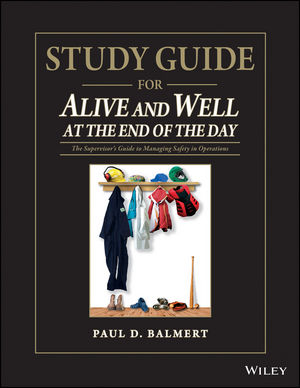Here are six large-scale safety techniques I observed in Australia that would surely reduce injuries if used in the U.S. By considering the barriers we would expect to encounter when attempting to implement these strategies in the U.S., we begin to define the gap between a real and an ideal safety culture.
1) Driver training. In Australia, teens can begin learning to drive at age 16 (with adult supervision) after first passing a written test. Then they display special plates on the front and back of their vehicles to warn other drivers of their inexperience. They begin self-monitoring their driving behavior at age 16.5 by maintaining a log book that documents at least 25 hours of learning in a variety of road and traffic conditions.
At age 17, teens may demonstrate they can drive unsupervised by passing a driving and hazard-recognition test. If they pass, they change their learner's license plates (a black "L" on a yellow background) to "proviso" plates (a red "P" on a white background), which they must keep on their vehicle for two years.
2) Alcohol limits. What is the blood alcohol concentration (BAC) level for legal intoxication in your state - .08 or .10? For Australians the legal alcohol limit is .05, and sobriety checks for this level of intoxication are quite common. Plus, if .05 is suspected by an on-the-spot breathalyzer assessment, the driver is removed from the vehicle and taken to the police station for a blood test. Young Aussie drivers, specifically those with special "L" or "P" plates, cannot have a BAC greater than .02 if they want to retain their license and drive home from a sobriety check point.
3) Intersection surveillance. In the larger Australian cities, cameras are installed at most major intersections to monitor "red-light running." With photographs of license plates, it's possible to mail perpetrators a financial penalty for not stopping at a red light. And most cab drivers have a video camera in their vehicles, an apparent deterrent of robbery and violence. This kind of public monitoring probably facilitates acceptance of the interpersonal observation and feedback procedures of behavior-based safety (BBS).
4) Auditory signals. I was pleasantly surprised that every city intersection I crossed in Melbourne, Sydney, and Brisbane included both an auditory and a visual signal to control pedestrian behavior. Specifically, the "Don't Walk" signal is accompanied by a pulsating tone. When the visual sign changes to "Walk," the sound changes from intermittent to continuous.
This auditory signal is obviously invaluable for the visually impaired, but I perceived a benefit for everyone. A combined visual and auditory warning to remain on the curb is more difficult to ignore than a sign alone, especially in the presence of other pedestrians who are waiting for the dual signal to indicate it's safe to cross the street.
5) No hand-helds. Cell phones are clearly as popular in Australia as in the U.S. But in Australia it's illegal to use hand-held cell phones while driving, and I never saw a driver in Australia using a cell phone. This is not a new law, having been in effect for at least two years in every Australian jurisdiction.
6) Controlled lighting. Have you ever had trouble finding the light switch in a hotel room? To conserve electricity, do you always turn off all of the lights in your room before leaving? Sometimes this is impossible because a light must be left on in order to exit the room safely.
I've encountered each of these lighting problems in American hotels, but experienced none in Australia. Every hotel room I stayed in across four cities provided a unique and innovative approach to electricity control (from my biased U.S. perspective). Adjacent to the exit/entrance door inside the hotel room is a slot for the room key, which controls all of the electricity in the room. When guests insert their key in this slot, all of the lights are activated; and when leaving their room and removing their key, all of the electricity to the room is deactivated (turning off lights, television, and air conditioning). The safety and conservation advantages of this simple engineering intervention are obvious. Plus, I always knew where to find my room key.
Lessons learned
So what's the "psychology of safety" lesson from a two-week tour of Australia? These six safety and conservation interventions mentioned here benefit human behavior and prevent unintentional injury. And each is feasible for immediate application in the U.S.But there are cultural differences between the U.S. and Australia that get in the way. For instance, when traveling on Australian airlines, I received 100 percent compliance with my Airline Lifesaver card. This intervention card asks flight attendants to read an announcement that reminds passengers to use their vehicle safety belts when continuing their travel with ground transportation. In contrast, on my first return flight in the U.S. (from Los Angeles to San Francisco), the flight attendant politely told me, "We're not allowed to modify our announcements."
I have distributed the Airline Lifesaver on more than 1,000 U.S. flights in 17 years, and less than 50 percent of the flight attendants have honored my safety request. It's noteworthy that Australia was the first country to pass safety-belt use laws (in the mid-1970s), and more than 95 percent of Australians buckle-up, compared to about 70 percent of Americans.
Which of these safety strategies would be very difficult to implement in our culture? Those that imply the most loss of individual freedom - but would likely reduce the most injuries and fatalities (raising the legal driving age, improving driving instruction, and enforcing a lower BAC for driving while intoxicated). That says something about our culture and the special challenges confronting the safety professional in America.
